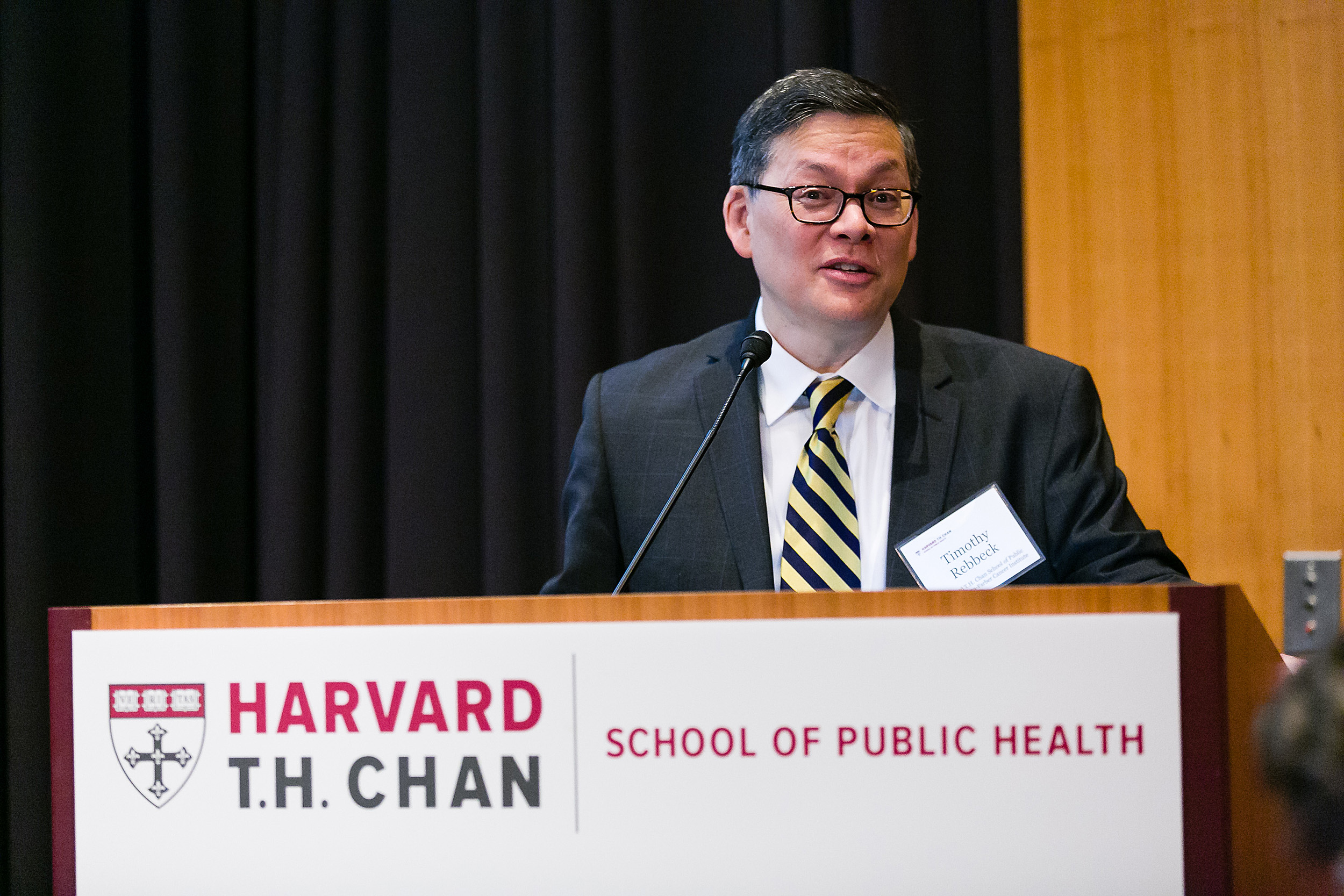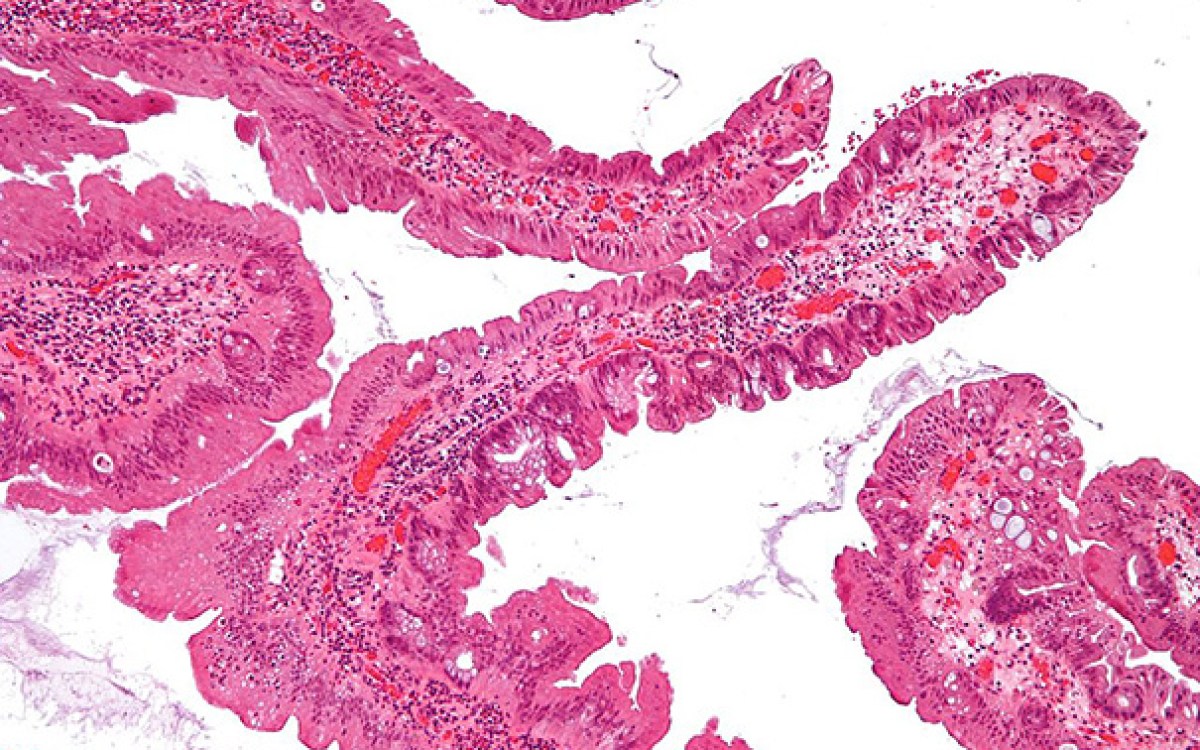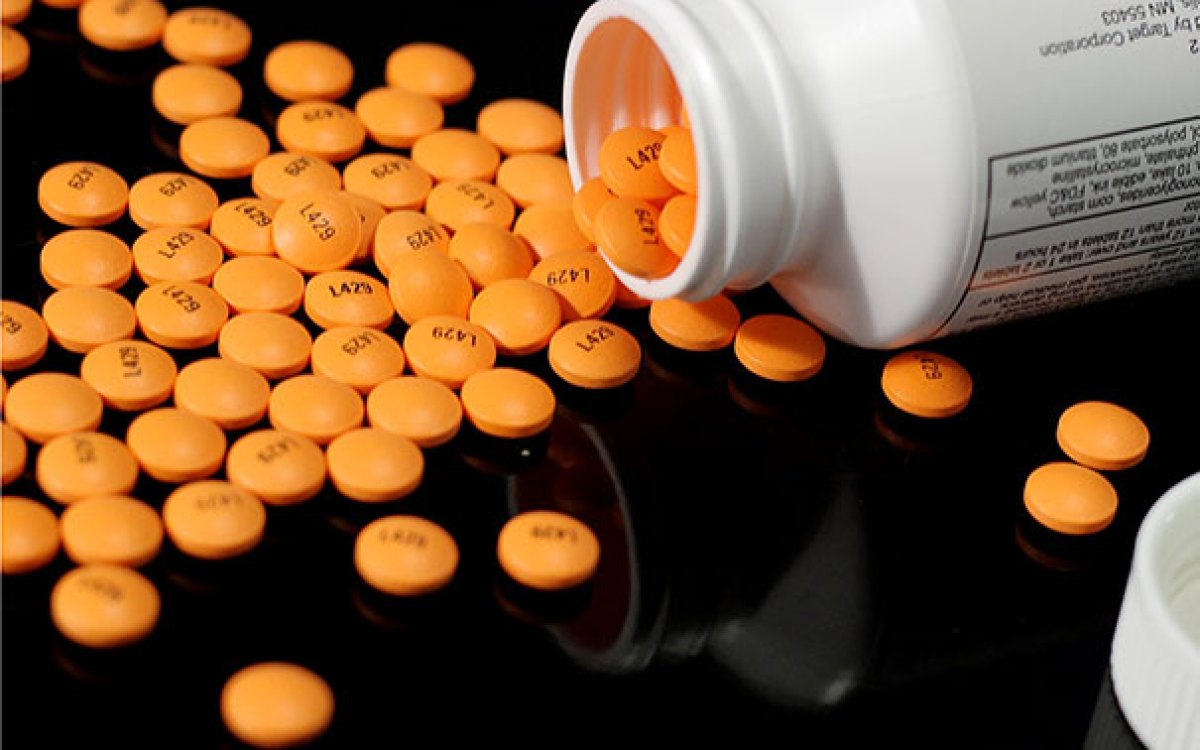
Timothy Rebbeck, the director of the Chan School’s new Zhu Family Center for Global Cancer Prevention.
Photo by Josh Levine
A gathering to battle cancer
Researchers come to Harvard to share findings, launch center for early detection
Amid alarming projections that global cancer rates will skyrocket, researchers from around the country gathered at Harvard on Monday to share their latest findings and to launch a center whose aim is to boost early detection and prevention.
By 2040, deaths due to cancer are expected to rise 60 percent in the U.S., 79 percent in China, and 106 percent in sub-Saharan Africa, according to Timothy Rebbeck, Vincent L. Gregory Jr. Professor of Cancer Prevention at the Harvard T.H. Chan School of Public Health and director of the School’s new Zhu Family Center for Global Cancer Prevention. The center was launched Monday on World Cancer Day.
“I think that we have the very clear picture that … while we have many interventions and treatments and ways of approaching cancer, we’re still not anywhere near dealing with the coming onslaught of the cancer burden,” Rebbeck said.
In the last century, Rebbeck pointed out, medical science has made inroads against several of humanity’s top killers, including infectious disease and heart disease, but cancer has proven stubborn.
A look at the top 10 killer cancers shows that, while the disease is a burden around the world, the mix of cancers varies by region. In the U.S. and China, for example, lung cancer is the top killer, while in sub-Saharan Africa it is cervical cancer, a sign that the latest treatments are slow to be distributed there. An effective vaccine against the human papilloma virus — one of the top causes of cervical cancer — has been available for more than a decade.
In addition, Rebbeck said, although smoking rates are falling in many places, that’s not the case in Africa and the eastern Mediterranean, where the rates are rising. As a result, rates of smoking-related cancers are expected to rise there as well.
Rebbeck made his comments at the new center’s inaugural symposium, “Reinventing Cancer Prevention and Early Detection for the 21st Century,” held in Harvard Medical School’s New Research Building. The all-day gathering featured experts from around the country discussing the latest findings in their work to prevent cancer and detect cancers earlier.
Harvard Chan School Dean Michelle Williams said the center’s aim fits well with public health’s broad philosophy that “it’s far better to prevent illness than treat it.”
When it comes to most types of cancer, Williams said effective prevention seems a distant goal, but she hopes for a time when cancer is seen like smallpox is today — a once-dreaded disease fading from view.
“Imagine some day in the future, it might be possible that we no longer need symposia like this, or that we would need a World Cancer Day to draw attention to the devastation of this disease,” Williams said. “Perhaps because of the scientific advances sparked by the work of this interdisciplinary center … future generations will look upon cancer as a disease of the past.”
The center, Rebbeck said, will encourage innovations in methods, technology, and tools to combat cancer. It will encourage multidisciplinary teams to bring broad perspectives to bear, and will make health equity and global dissemination of innovations a goal. It will offer a new grant program for researchers doing innovative work at Harvard and a second grant to African scientists conducting “catalytic research” on that continent. The center will support cancer prevention education and training, and create two endowed chairs in cancer prevention and early detection, one for a full professor and a second for an assistant or associate professor.

Sanjiv Gambhir talking about the importance of early cancer detection.
Photo by Josh Levine
During the discussion, Sanjiv Gambhir, chair of Stanford Medical School’s Radiology Department, said early detection is the key to cancer survival, yet most of the health care industry’s efforts are directed at later stages of the disease.
For example, the five-year survival rate for lung cancer that has spread throughout the body is just 3.5 percent, while the rate for the same cancer if detected when still localized rises to 52.9 percent. Despite that dramatic difference in survivability, just 15 percent of lung cancers are caught early. That low early detection rate is replicated for other cancers. That results in more cancer deaths, and also 100 to 1,000 times more money being spent on treatment for patients in late stages, as opposed to early stages.
“We have this huge opportunity to start to now think about how we shift to catching these cancers early,” Gambhir said.
Gambhir described a suite of technologies in development that aim to catch cancer early, and he drew a picture of a future when homes, cars, and electronic devices regularly monitor health and pick up cancer-related changes in their early stages.
He used as an analogy the intensive monitoring of jet engines, which once were checked just every six months. Routine checks were first increased in frequency, and then sensors were integrated into the engines to provide constant monitoring. Today, he said, jet engines have 100 sensors that check their status every 30 seconds. The sensors send data back to technicians, who evaluate the readings and decide whether and what intervention is needed. In addition, Gambhir said, each engine has a virtual twin on a computer that can be used to predict how changing conditions will affect performance in the future.
Something similar may one day be possible for humans, Gambhir said. Inexpensive sensors are being developed that can be deployed in the body to provide early warning of cancer.
Early detection efforts are using biomarkers, molecules given off by tumors or by the body fighting cancer. But the current suite of biomarkers can be difficult to spot, particularly early on when detection is most useful. The tumors are small and the biomarkers few.
To remedy that, researchers are developing synthetic markers that can be injected into the body and react in a way that is easily detectable when cancer is present. Gambhir described detection technology developed by his lab that can detect biomarkers for cancer at very low levels. The technology is used in concert with a low-dose CT scan, used to look for lung cancer in smokers, and can reliably identify the false positives that are common with the CT screen.
Eventually, Gambhir said, a person’s home or car could be brought into the monitoring scheme. He described a “smart toilet” that routinely samples urine and feces to help build a personal health profile, and then monitors a person over time to detect changes that might indicate early cancer growth.
Before that, he said, we need a better understanding of the earliest changes showing cancer growing in the body.
“If we don’t invest in the biology, we can never solve the early detection problem,” Gambhir said. “None of these tools can work miracles unless they know what to look for.”







